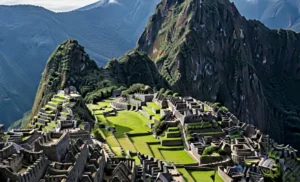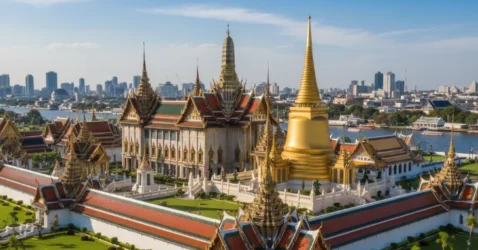Unveiling South America’s Secrets: Eight Mysterious Places Worth Exploring
South America is a continent brimming with ancient history, captivating legends, and some of the world’s most baffling natural and man-made wonders. Long before the recent global travel shifts, the allure of journeying abroad was often the chance to stand before these mysterious locations and ponder the questions they present. How were these structures built? What was their purpose? Was there some otherworldly guidance involved? While we may never have definitive answers, the only way to truly grasp their mystery is to see them for yourself. When you’re ready to embark on an adventure that blurs the line between magic and reality, here are eight mysterious places in South America that are worth adding to your travel list.
1. Monte Roraima — Venezuela
Rising to a staggering summit of 9,200 feet (2,810m) and spanning 12 square miles (31km2), Monte Roraima offers a view so breathtaking it will leave you speechless. This unique mountain is a tripoint, where the borders of Brazil, Guyana, and Venezuela meet, allowing visitors to experience the natural beauty of all three countries at once. The site is deeply rooted in the myths and legends of the indigenous Pemon and Kapon people, who believe it to be the stump of a colossal tree from which all of the world’s fruits and vegetables originated. The sheer scale and mystical significance of Monte Roraima make it a truly unforgettable destination.
2. Nazca Lines — Peru
In the arid Nazca Desert of southern Peru, an incredible enigma awaits. The Nazca Lines are a series of massive geoglyphs etched into the desert floor between 500 BC and 500 AD. They depict a variety of animals and shapes, including a lizard, monkey, spider, dog, cat, and even a human. The dry climate and isolated location kept them largely undisturbed for centuries. While they can only be fully appreciated from the sky, their remarkable accuracy has led some to speculate about extraterrestrial involvement. However, a fascinating discovery in the early 2000s debunked this theory. An American skeptic and paranormal investigator demonstrated that with simple tools and careful planning, he could recreate some of the largest designs in just a few days, proving these wonders were indeed the work of human ingenuity.
3. Perito Moreno Glacier — Argentina
No trip to Argentina is complete without a journey to Patagonia, and within this stunning region lies the Perito Moreno Glacier. What makes this glacier so unique is that it is one of the only glaciers in the world that is still growing. It measures an impressive 3.1 miles (5km) wide and nearly 200 feet (60m) high. Water from Lake Argentino and the Santa Cruz River flows toward the glacier, gradually building pressure over time. This pressure eventually culminates in a spectacular rupture of the glacier’s ice, a phenomenon that is both rare and magnificent. These ruptures don’t occur on a set schedule—sometimes they happen once a year, while at other times it might take a decade. If you dream of witnessing this natural marvel, a little bit of luck is definitely required.
4. Caño Cristales — Colombia
Known as the “Liquid Rainbow,” the Caño Cristales river in Colombia’s Meta province is a sight to behold. Its waters are a kaleidoscope of colors, with striking reds, yellows, blues, blacks, and greens created by a unique combination of plants, minerals, and light reflections. This vibrant display makes it a particularly popular destination for photographers seeking to capture nature at its most artistic. To experience the river’s full chromatic glory, plan your visit between late July and November, as the colors are far less pronounced at other times of the year.
5. Easter Island — Chile
Easter Island is famously home to the mysterious moai statues. While their enormous heads are what most people imagine, the truth is that all of the structures have full torsos buried beneath the ground, and some even have legs. Constructed between 1100 and 1680 AD, their purpose remains a subject of debate, as does the method used to move these massive sculptures with the technology available at the time. What’s even more puzzling is that only about 25% of the statues ever reached their intended destination; the rest, along with the tools used to create them, were simply abandoned where they were.
6. Machu Picchu — Peru
Often called the “Lost City of the Incas,” Machu Picchu stands as one of the world’s most incredible archaeological discoveries. Built around 1450, it was mysteriously abandoned just 100 years later. When it was rediscovered in 1911, archaeologists were astonished by the perfectly fitted stonework of its houses, palaces, and temples. A visit to this breathtaking ancient city is not just a historical tour; it’s a journey into a realm of peace and tranquility that can feel truly transformative.
7. Salar de Uyuni — Bolivia
If you’ve ever wanted to walk on clouds, a trip to Salar de Uyuni is the next best thing. As the world’s largest salt desert, it creates a stunning optical illusion where the horizon disappears, making it impossible to distinguish where the earth ends and the sky begins. Its surreal landscape, which looks like something out of a Salvador Dalí painting, has earned it the nickname “the Dalí Desert.” It has even served as a filming location for scenes in movies, including the widely debated Star Wars: The Last Jedi.
8. Emas National Park — Brazil
This UNESCO World Heritage Site is home to a host of unique and quirky creatures, from the giant anteater and the black howler monkey to the tapir—a peculiar creature often described as a mix between a pig and a hippopotamus. But for a truly unusual experience, you should check out the giant termite mounds that mysteriously light up with a captivating green glow. This phenomenon isn’t caused by aliens, as some might speculate. It’s actually the work of beetle larvae. They emit these mesmerizing green lights to attract termites, luring them into a deadly trap where they become the main course for the hungry larvae.


















